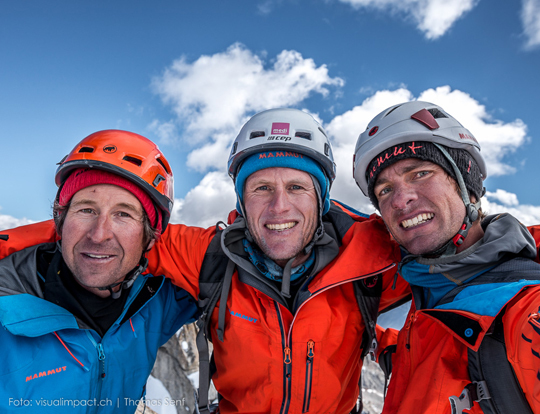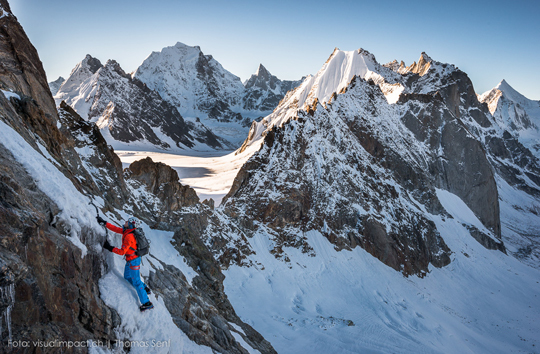
Swiss climbers Andreas “Dres” Abegglen, Thomas Senf and Stephan Siegrist executed three notable climbs in the Himalayan sub-range of India’s Kishtwar region this autumn. They made the first ascents of Shiepra and Kharagosa, and added a new line to Kishtwar Shivling’s east summit.
Brits Dick Renshaw and Stephen Venables first climbed Kishtwar Shivling in 1983. It took them five days to reach the base of the mountain. They climbed from their advance base camp at 4300 meters to the nearly 6000 meter summit in a single five-day push through difficult and varied face climbing. “Like its Garhwal namesake, this Shivling has no obvious easy routes. The same is true for most of the Kishtwar peaks. There is an enormous scope for demanding technical climbing at comparatively low altitude,” Venables wrote in the 1984 American Alpine Journal.
Four years after their first ascent, allegations of rigged voting in Kashmir’s 1987 elections spurred an insurgency by radical militant groups against Delhi rule, Melissa Hebert and Spencer C. Tucker wrote in the Encyclopedia of Insurgency and Counterinsurgency. In 1993 Mick Fowler, Mike Morrison, Mike O’Brien and Stephen Sustad climbed in the area, though difficulty receiving permission added four days to their approach time. The insurgency continues, but violence in the area has reduced dramatically, the BBC reports. In 2003, Pakistan agreed to a ceasefire with India.
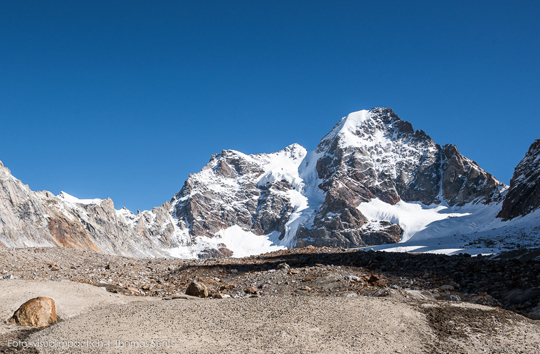
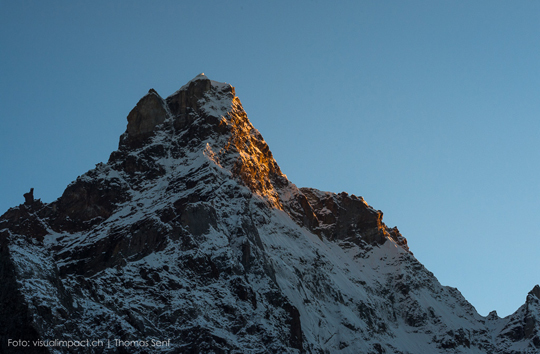
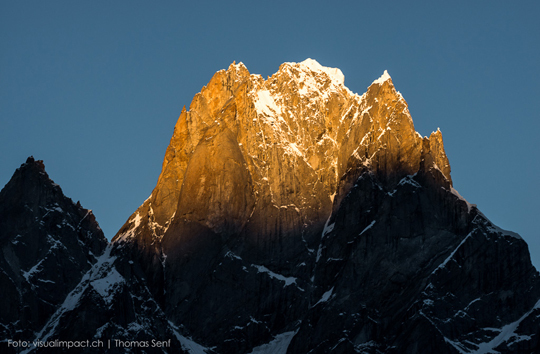
As political tensions diminished, climbers returned to the Kishtwar region in greater numbers. A 2011 party of Siegrist, Denis Burdet, David Lama and Robert Frost. They established a new route on the northwest face of Cerro Kishtwar. “For almost twenty years, the region in which Cerro Kishtwar lies had been practically forgotten by climbers and mountaineers,” David Lama wrote on redbull.com. “Now, taking the road from Kishtwar to Gulaghab, we passed a few military checkpoints and never-ending amounts of barbed wire, but had no difficulty making the trip.”
This autumn, Abegglen, Senf and Siegrist arrived in Kashmir amid late-season monsoons and set up their first base camp on September 13. They then climbed the 700m south face of Shiepra, bivying once at 5100 meters. The trio reached the 5885-meter summit on September 16, and descended the exposed west ridge. They named their route Maaji (IV WI3 75 degrees), meaning “mother” in Hindi. Their Liaison Officer, Ran Jan, named the peak Shiepra after the wife of the Hindi God Shiva.
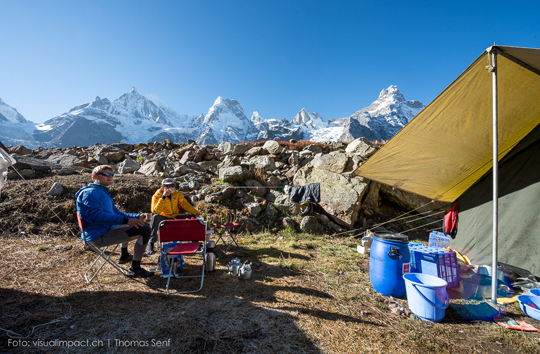
The party continued in good weather to Kharagosa (5840m). From the base of its east face, they climbed three pitches of tricky mixed terrain to reach the southeast face, where less demanding climbing brought the team to the summit on September 21. “We were into the second rope length on the pillar when we arrived at a steep and very beautiful section of rock with great friction,” Siegrist told Alpinist. “It was such a bummer we had our alpine boots on and no soft climbing shoes with us!” They named their route Pinky (6a [5.10] M4, 1000m) after a beautiful woman in the nearby village of Sumcham, and the peak Kharagosa, “rabbit” in Hindi,” after a rock structure they thought looked like the Playboy bunny.
Abbeglen, Senf and Siegrist moved their camp closer to Kishtwar Shivling after descending Kharagosa and established a second base camp. From there, the trio followed a 50-degree ramp up to a saddle at 5400 meters on Kishtwar Shivling. Ten pitches of WI5 led them through a hidden couloir, which Siegrist compares to the famous Supercanaleta on Fitz Roy. They then climbed tricky mixed terrain that dead-ended in a crown of powdery cornices along the 5895m eastern apex of the mountain’s three-pronged summit. “After wracking our brains to find a way to get to the summit, we saw a hole in the cornice that was big enough to climb through…luckily it led us straight to the summit!” Siegrist wrote. They named their line up the east pillar Challo (WI5 M6, 600m), meaning, “Let’s go.” The Swiss team made 14 rappels that night to reach their camp on the saddle and arrived at base camp October 2.
“What’s important for us is the beauty of a mountain and an interesting line,” Siegrist told planetmountain.com. “What remains is the experience of discovering and climbing mountains hitherto unknown.”
